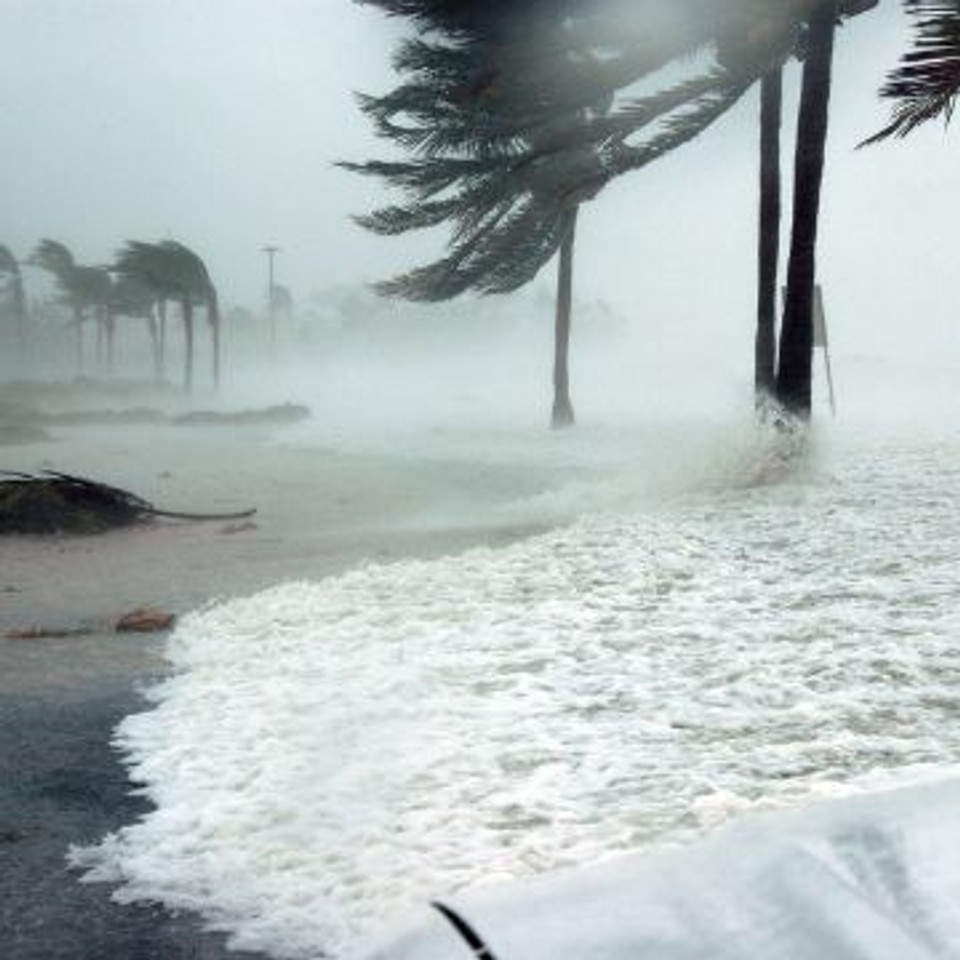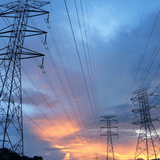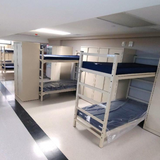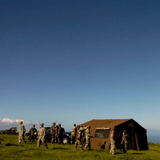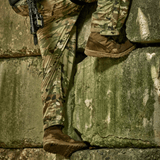How To: Storm and Hurricane Preparedness
As we all know, preparedness is the key in times of calamity. It is important to have a plan and be ready for whatever may happen in times of emergency. This includes having supplies on hand, such as food, water, emergency supply kit(s), and other types of gear. It is also crucial to have a backup plan(s) in case the first idea doesn't go as originally intended. In times of crisis, it is truly vital to stay calm and think clearly. This will help you make the best decisions possible and by having plans and supplies already in place you will be able to make smart decisions with ease.
Understanding the Situation
First, let's review some of the main natural disasters for those new to storm areas that cause problems for people when they happen. From a military or preparedness perspective the first step is to understand your situation, your limitations and current readiness status.
"Negligence is the main cause of danger. Always make responsible choices for your safety."
Tropical Storm
A tropical storm is a storm that forms in tropical regions hence the namesake. High winds and rain usually accompany these storms. It can be very dangerous and can cause a lot of damage to life and property.
Furthermore, a tropical storm is a type of storm that forms over tropical waters and has sustained winds of at least 39 mph. These tropical storm force winds can cause devastating aftermath, especially if they make landfall. Typically, it can cause flooding, power outages, and damage to infrastructures. They can also lead to loss of life if people are not prepared for the situation at hand.
Hurricane Season
The hurricane season is a time when many people in the United States Government pay close attention to the weather. This is because there is a risk of hurricanes hitting the coast. It can cause damages beyond expectations.
A hurricane can be a very dangerous storm. Winds can reach up to 180 mph, and the storm surge can cause significant damage. If you are in the path of a hurricane, you need to take steps to protect yourself and your family. Planning should be done even before the calamity takes place to ensure the best possible outcome for you and your family.
Should You Stay Home or Evacuate?
Stay Indoors During the Storm/Hurricane
If you live in an area that is likely to experience a hurricane, it is important to know what to do to stay safe. Once a storm hits staying indoors during a hurricane is the best way to avoid injuries and other worst scenarios. Make sure all the windows and doors in your house are closed and locked. Move all of your furniture away from the windows and choose an area in the home to stage supplies and move to that is the strongest to withstand the wind and rain. These rooms should have no windows if possible, load bearing walls, usually a smaller room and always on the ground floor. Rooms such as bath or laundry rooms we found works best.
Evacuate After or before the Storm/Hurricane
When the calamity has subsided and your house is torn, you need to vacate the area and go to safer places. Take note that evacuation might already be necessary even before the hurricane hits your location. So it's crucial to be prepared and always be on the go during the storm season.
There are designated areas for evacuation centers in the USA, but they are not always well publicized until that time. If a natural disaster or other emergency strikes, it is important to know where these centers are located so that you can get to safety as quickly as possible. The Federal Emergency Management Agency (FEMA) maintains a website with a list of all designated evacuation centers in the United States. The site is constantly updated, so it is important to check back often for changes.
How Can You Protect Your Home Before a Storm or Hurricane?
Prepare for Wind
The storm wind is a powerful natural force that can destroy properties if people are not properly prepared for it. Make sure your home is properly secured against wind damage. This includes installing strong anchors for your roof and windows and making sure your roof is in good condition. Also, have a plan for what to do if your power goes out, and be sure to keep emergency supplies on hand.
Prepare for Flooding
Flooding is one of the most common and dangerous natural disasters in the world. It can occur anywhere there is excessive rainfall or snowmelt, leading to rivers and streams overflowing their banks. Even only a few inches of water inside can completely destroy a home. Flooding is especially dangerous when it catches people by surprise. Water can rise rapidly, making it difficult for people to escape to safety. Flooding can also lead to secondary hazards like mudslides and contaminated water sources. That’s why it’s important to be prepared for a flood before it happens.
Knowing what to do in the event of a flood can help keep your family safe. One of the best ways you can help when there are reports of suspected flooding is to have empty sandbags. Before the event happens you can start filling them and placing them in stacks around doorways and other areas to help prevent water from getting in. Prior to storm season you can also have your sandbags filled and staged in an area where they can easily be moved into place.
How to Prepare for a Storm or Hurricane?
Being disaster ready at home, at work, and in the car is very important. Whenever there is a storm, one thing is for sure, you can never predict what is going to happen next. This is especially true when it comes to calamities like hurricanes. Some of the most destructive hurricane conditions in history have caught people off guard. That is why it is always better to be prepared for the worst case scenario. As the old adage goes it's better to have it and not need it than need it and not have it.
Stay Updated
When the storm season is brewing, it’s important to be up-to-date on the latest weather conditions. Please stay tuned to the latest updates from your local news station or weather app about the recent hurricane watch for your safety. If you haven't experienced tremendous damage in the past few emergencies, it doesn't mean that you will be safe this time. Have multiple sources of communication such as a hand crank AM/FM and weather radio and battery power packs for phones.
Also, as the world becomes increasingly warmer, the likelihood of unpredictable and disastrous weather conditions drastically increases. Severe typhoons, hurricanes, and droughts are all becoming more common, wreaking havoc on communities and economies. No matter how modern the typhoon equipment the United States government has, it can never assure the public's safety. That's why they also advise preparing beforehand.
Know Your Evacuation Route
Never hesitate to evacuate if necessary! It's understandable why many people are afraid of evacuation. Who wants to evacuate and spend a few days in an evacuation center? Nobody! But always know that it can save lives!
If you heard the news about a terrifying hurricane that might occur in the next few days, go to safer areas if you live within a danger zone. A friend's or relative's house will do. When advised by the government to vacate your place and go to specified shelter locations, just follow!
Secure Basic Emergency Essentials
Actually, most households store these basic needs. This is a great reminder that you should also have these items in your office or your car for hurricane preparedness in case flooding and strong winds hinder you from going home. You should have this packed in one bag once the storm season is near.
Food and Water
When a storm hits, it is important to have food and water on hand. During a storm, power can be out for hours or even days. This means that you will not be able to use your refrigerator or oven. It is important to have food that does not need to be cooked. Nonperishable foods such as canned goods, nuts, grains and beans, dried vegetables, fruits and meat, and sweets are all good options. You should also have plenty of water on hand. Fill up your bottles, bathtub, and sink with water so that you have enough drinking water and clean water for cooking, and cleaning.
We found that Meals Ready to Eat, MRE's are the best option over freeze dried food since water and the ability to cook can be limited. MRE's are very portable and can also be consumed on the go directly from the packaging.
Always choose portable water carriers for the same reason giving you options to use them at home or quickly take with you during evacuation. Both hard BPA free 5 gallon water containers or collapsible versions are good options. Military styles can be carried more securely in a back of a truck and designed to take more abuse. Using uncovered water such as from a bathtub to flush toilets or wash with is best. If you choose to use it for drinking then boil it first.
Medicine
It's important to take any precautions along with some basic flu, sinus and other daily medication during storm season. Some things to keep in mind are to make sure all medications are stored in a dry and cool place, preferably in an anti-moist pouch. If there is a storm coming, it's also important to remove all medicines from the fridge and store them in a safe place. This way, if the power goes out, your medications will be safe.
If the budget permits, it's also a good idea to have backup pieces of your medications that can last for the next few weeks in case you can't get them during and after a storm. Taking these steps will help ensure that you and your family members stay safe during the typhoon season.
First Aid Kit
Hurricane force winds can blow away tree branches, roofs, and other debris. A first aid kit for a strong storm should include supplies to treat injuries such as cuts, scrapes, and bruises. It should also include supplies to treat more serious injuries, such as broken bones, massive bleeding and head injuries. Never forget your first aid emergency kit and also ensure you have one big enough for the number of people in your group.
The most common injuries are ankle sprains and massive cuts after the storm due to fallen debris and clean up accidents. After a storm EMS may still not be fully available for a few days so always be prepared yourself.
If you have a family member with comorbidities, you need to secure equipment that can monitor their blood pressure, temperature, sugar, and oxygen levels. This could save a lot of lives more than you imagine. So don't forget to include this on your checklist.
Personal Hygiene Items
It's important to make sure you have all of your personal hygiene items during a storm. This includes items like toilet paper, soap, shampoo, hand sanitizer, and toothpaste. If you have to evacuate your home, you'll want to make sure you have everything you need with you. Having these items will help keep you clean and comfortable during a difficult time.
As we recently experienced with Covid, it's vital to stay clean and protected, especially when you are sharing a space with other people. This is to make sure that disease control is on point.
Baby Supplies
During a storm, it is important to have supplies for your baby. This includes items like diapers, wipes, formula, and food. If you have these items on hand, you will be able to keep your baby safe and comfortable until the storm has passed. Baby supplies must be included in your emergency supply kit.
Pet Supplies
When a storm hits, it's important to have the supplies you need to take care of your pet. Make sure you have a sturdy carrier to transport your pet, food, and water for several days, and any medications your pet needs. If you have a pet that is afraid of storms, be sure to have something that can comfort them.
Flashlight
Flashlights are essential during storm season because they provide a light source when power is out. This is important because it can help people see where they are going and avoid getting injured. Additionally, flashlights can also be used to signal for help if needed. We also suggest chemical lights also known as glow sticks. They have a long shelf life and can be used for both signal making and light. Have both yellow, green and red on hand for different uses.
Battery Powered Radio
Any battery power and or hand crank NOAA weather radio is a great tool to have during a storm. You can use hand crank radio as it is good for getting time sensitive information and as the name suggests, you can charge it via hand crank. It allows you to stay up to date on the latest weather information, which can help you make decisions about whether to stay home or evacuate right away. Having a battery powered radio also means that you can stay safe and be connected to the outside world, even if the power is out.
Emergency Power Sources
When a major storm hits, one of the most important things to have is emergency power. You can use it to charge your cell phone and stay connected to other people and give them a hurricane warning. This can come in many forms – from a mini power bank to a solar panel array. When the power goes out, these sources can be a lifesaver.
Heat and Fire Source
During storms, it is important to dress warmly and stay dry. Hypothermia is a serious danger during storms. In severe cases, hypothermia can lead to coma and death. Therefore, it is important to have an on-hand heating pad, heater, cold and wet weather gear, or any other source of warmth while you shelter in place.
Additional Emergency Supplies and Gear
Now, let's discuss further items for the utmost emergency management. To ensure hurricane safety, an ordinary emergency kit might not be enough. Below are some of the most useful things you shouldn't forget to include on the list.
5 Gallon Water Can
A good option for 5-gallon water must be a sturdy, lightweight container made of high-quality material that is weather and impact resistant. When a hurricane or other type of severe weather hits, it can cause all sorts of damage. One of the things that can be damaged is the water infrastructure, which can lead to widespread water outages and even flooding. Therefore, storing clean water that could last for a few days is a must.
Collapsible Water Storage
Evacuating can give you more protection in terms of facility, but it can also be challenging to get there, especially if the whole town is affected by the current hurricane. One way to make the experience a little easier is to bring a collapsible water bottle with you and keep yourself hydrated. These bottles are designed to be lightweight and take up minimal space, making them perfect for carrying with you on the go. Plus, they can be refilled once you've reached your destination, so you'll always have access to clean drinking water.
Waterproof Tarpaulin (Tarp)
A waterproof tarpaulin can come in handy during a storm. It is better and sturdier than other plastic sheeting. If you have one handy, you can use it to cover your belongings to keep them dry. Tarps can also be used as a windbreak to protect you from the wind and rain when the house gets damaged.
Waterproof Bag
When it comes to evacuating during a natural disaster, having a waterproof bag is a must. It can protect your belongings from getting wet. You can keep your clothing, gadgets, important documents, food, and extra cash dry without worries.
Sleeping Mat
Heavy rain means colder weather. When a storm is brewing, it is important to have a sleeping mat to keep you off the cold, hard ground. A good sleeping mat will keep you warm and comfortable, even in the worst weather conditions. It can be used during outdoor camping as well. So getting one serves multiple purposes.
Medical Kit
A medical kit is an important item to have in case of an emergency. It should be extremely versatile to be used for general purposes. A medical kit should aid first aid needs such as cuts, lacerations, burns, and sprains.
Sturdy Boots
One of the most important things to have when a storm is coming is a good pair of boots. Boots can help keep your feet warm and dry, which is especially important during a storm. Most importantly, you need boots that will protect you from potential injuries, like cuts and punctures from sharp debris.
MRE
A safe shelter can sometimes run out of food supply. During the aftermath, FEMA might show up a little bit late. Expect water, power, and food shortage. A complete MRE meal for calamity would include the main course, side dish, dessert, and drink. It is packed and vacuum sealed individually. MRE is on the go and can be eaten as is if necessary. It also has a heating bag so you can warm up anything in there but you can also eat them without heating as well.
Freeze Dried Food
Freeze-dried food is a great option for long-term food storage. It has a longer shelf life (usually around 25 years but check what the manufacturer says before purchasing) than fresh food and does not require refrigeration. Freeze-dried food is lightweight and easy to store, making it perfect for taking with you when evacuating. The only "downside" to freeze dried food is you need to have clean boiling water for it. If you think clean water may be an issue then MREs may be a better option in that situation.
The other good thing is you can actually purchase freeze drying machines and start making your own backup/emergency food as well. Instead of throwing leftovers out or putting them in the fridge hoping they will get eaten, freeze dry them to preserve, prevent food waste, and already be on your way to building an emergency food supply!
Can Opener
Sometimes, the only food option that is available is canned goods. Although it's too heavy to pack, canned good items can be sourced out immediately. There are easy-open can items but it is necessary to have a basic P-38 can opener ready instead of a knife.
Sand Bag
Sandbags are often used to prevent flooding. They are filled with sand and placed in areas that are prone to flooding. The sandbags help to absorb the water and keep it from flowing into the area. If the flood is about to enter your house and the storm has already subsided, you can use sandbags to block the water outdoors.
5 Gallon Fuel Can
Fuel cans provide a temporary storage solution for gasoline or diesel fuel during a storm. By keeping fuel cans in an easily accessible location, you can ensure that you have enough fuel on hand to run your generator or vehicle if needed. In addition, properly storing fuel can help prevent any potential spills or leaks. Therefore, you have to buy a high-quality fuel can that is durable and weather-resistant. Make sure to keep fuel cans away from any potential ignition sources, such as heaters or lanterns.
Choose High Quality Gears and Equipment To Save Lives
When lives are on the line, it is imperative that you have access to the best gears and equipment possible. That's why it's so important to choose high-quality items when preparing for calamities like a hurricane. With the best tools at your disposal, you can be more confident to protect yourself and other people.

